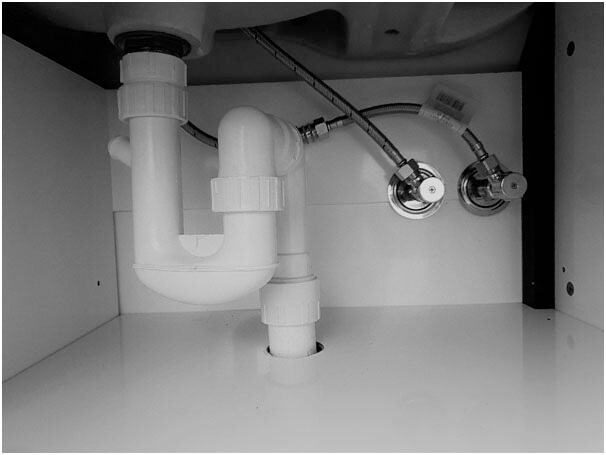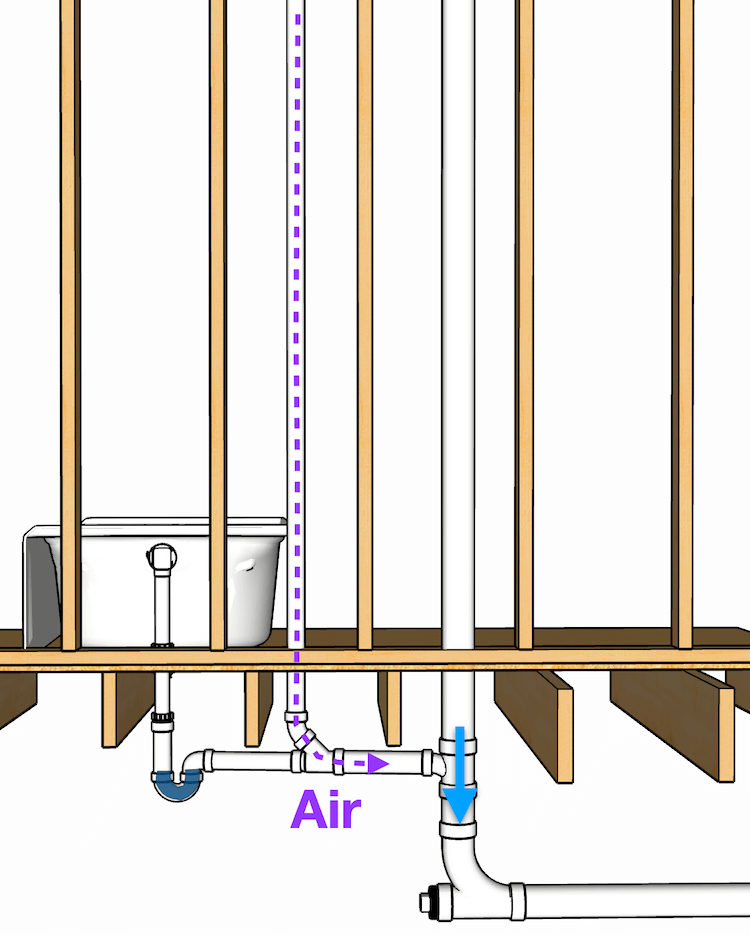Essential Reasons for Adequate Ventilation in Plumbing Systems
Essential Reasons for Adequate Ventilation in Plumbing Systems
Blog Article
How do you actually feel on the subject of Essential Plumbing Vent Pipes: Understanding Their Role?

Appropriate air flow in pipes systems is usually forgotten, yet it is vital for keeping the performance and safety and security of your home's pipes. Air flow aids regulate air pressure, avoid the buildup of damaging gases, and ensure the reliable elimination of waste. In this overview, we will certainly check out the importance of correct pipes air flow, how it works, and the advantages it brings to your pipes system.
Recognizing Air Flow in Pipes
Air flow in plumbing refers to the network of pipelines that permit air to move via the water drainage system. These vents offer several purposes, including managing air pressure within the pipelines, avoiding drain gases from going into the home, and assisting in the smooth flow of wastewater.
How Air Flow Functions in Pipes Systems
Air Pressure Law
Appropriate air flow maintains well balanced air pressure within the pipes system. When water streams with pipelines, it displaces air. Without appropriate air flow, this displacement can produce negative stress, causing slow down drains pipes or siphoning of water from traps, which can cause undesirable smells to seep right into the home.
Avoiding Sewage System Gas Accumulation
One of the most important functions of pipes vents is to avoid drain gases, such as methane and hydrogen sulfide, from collecting within the home. These gases can posture serious health and wellness threats and are highly flammable. Vent pipelines permit these gases to escape safely outdoors.
Aiding in Waste Removal
Air flow helps in the efficient removal of wastewater by protecting against airlocks in the drainage system. When air can flow freely with the vents, it permits water and waste to stream efficiently with the pipelines, reducing the danger of clogs and back-ups.
Kinds Of Pipes Vents
Key Stack Vent
The primary stack vent, likewise called the vent stack, is the key vent in a plumbing system. It expands from the primary drain line up through the roof covering, permitting gases to run away and fresh air to enter the system.
Branch Vent
Branch vents connect to the major stack vent and offer individual components, such as sinks, toilets, and showers. These vents ensure that each component has adequate ventilation to function effectively.
Air Admission Valve (AAV).
An Air Admittance Valve (AAV) is a one-way shutoff that enables air to get in the plumbing system without the need for a conventional vent pipeline expanding with the roofing. AAVs are commonly made use of in restorations or locations where installing a common air vent is impractical.
Indications of Poor Air Flow in Pipes.
Slow Draining Fixtures.
If your sinks, bathtubs, or bathrooms are draining pipes gradually, maybe a sign of bad air flow. Inadequate air circulation can create a vacuum result, making it challenging for water to drain effectively.
Gurgling Sounds.
Gurgling sounds originating from drains are commonly an outcome of air being drawn via water traps due to negative pressure in the pipelines. This is a clear indication of not enough ventilation.
Unpleasant Smells.
Sewage system odors inside your home are a red flag that your plumbing system is not properly ventilated. This might imply that drain gases are not being adequately vented outside, leading to potentially dangerous problems.
Common Air Flow Blunders.
Poor Vent Sizing.
Making use of small vent pipelines can bring about bad air flow and stress inequalities in the system. It's necessary to use vents that satisfy the details requirements of your pipes system.
Improper Vent Placement.
Placing vents as well far from the components they offer can lower their efficiency. Appropriate placement makes certain that air can stream openly and successfully through the system.
Ignoring Code Demands.
Building ordinance provide details standards for pipes ventilation. Disregarding these codes can result in a system that falls short to work correctly and might bring about pricey fixings or health hazards.
Advantages of Proper Ventilation.
Improved System Performance.
Correctly ventilated plumbing systems operate more efficiently, with less obstructions, faster draining, and much less stress on the pipelines. This efficiency prolongs the life expectancy of the pipes system.
Improved Air Quality.
By preventing sewer gases from entering your home, correct air flow contributes to far better indoor air quality, making your living atmosphere healthier and a lot more comfy.
Stopping Water Damage.
Appropriate air flow helps protect against water from being siphoned out of catches, which can lead to sewage system gases going into the home and creating water damages in time.
Actions to Make Certain Correct Air Flow.
Consulting Pipes Codes.
Always seek advice from regional plumbing codes when developing or changing your plumbing system. These codes supply the required standards for appropriate airing vent and ensure your system satisfies security criteria.
Routine Evaluation and Upkeep.
Routine evaluations can aid identify prospective air flow concerns before they become significant problems. Upkeep tasks, such as cleaning up vent pipes and looking for clogs, are necessary for keeping the system in good working order.
Professional Setup.
For new installations or significant modifications, it's important to employ a professional plumbing. They have the expertise to make sure the ventilation system is properly created and installed according to code.
Final thought.
Correct air flow is a crucial element of any pipes system, making certain that it functions efficiently and securely. By understanding the significance of ventilation, recognizing the signs of bad ventilation, and taking actions to maintain your system, you can protect against costly concerns and secure your home's air quality.
Understanding the Role of Your Plumbing Vents in the Drainage System
The plumbing system in your home is more than just the kitchen sink, toilet, and bathroom. Some problems that arise within home plumbing are hard to detect because homeowners may not understand potential causes.
One part of the plumbing system that could cause you endless problems is the venting. The drain lines that run through your home and drain wastewater need proper venting to function properly. Faulty plumbing vents can lead to several problems that require the expertise of a plumber to check them out. Before finding experienced plumbing services, there are a few things to learn about plumbing vents.
Why vents are vital
Vents in the plumbing system lead to an outside area such as the roof or the back. The function of these vents is to keep sewer gases away from the drain pipes. They also establish seals in the drainage pipes that prevent the sucking back of waste gases into the home. Venting in the plumbing system also allows oxygen to get into the drainage system, which is an essential component in the breakdown of waste matter. The vents also ensure that the air pressure within the drainage system remains balanced, facilitating the flow of wastewater.
Possible problems
When the plumbing vents are problematic, one of the consequences is imbalanced water levels in the toilet. If you notice that the levels in the toilet bowl rise and fall all the time, then there may be something wrong with the vents.
Another issue is air bubble formation within the toilet. In most cases like these, the drain pipes are not receiving enough air. Lack of air pressure equalization is what leads to water flow problems. If you come across such issues in your home, make sure you call professional plumbers, such as the ones from Perfection Plumbing & Drain Cleaning Ltd.
Potential causes
Several scenarios can lead to some of the plumbing problems that homeowners suffer because of venting. One such scenario is the use of incorrectly sized vents. Usually, vents are the same size as the drain line to facilitate proper venting. Vents that are too small will lead to some plumbing issues. Another potential cause is fixtures that are not close enough to the vents. In this scenario, air forces itself through the traps of other fixtures, leading to gurgling sounds from toilets and sinks.
Most of these problems also happen with clogged vents. Tree leaves and debris can cause clogging when they make their way down a vent. Unclogging plumbing vents is a service that you can entrust to Saskatoon plumbers. They will know how to snake down vents and remove clogging stuck in fixtures.

I recently found that blog post on What Is A Plumbing Vent & How Do They Work? while doing a search on the web. In case you liked our article kindly remember to share it. I appreciate your readership.
Click Here Report this page